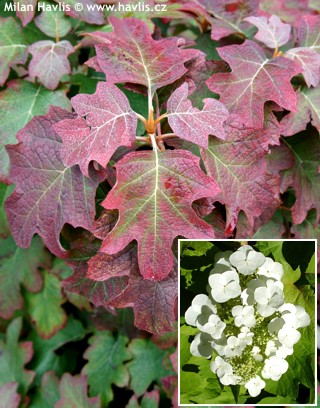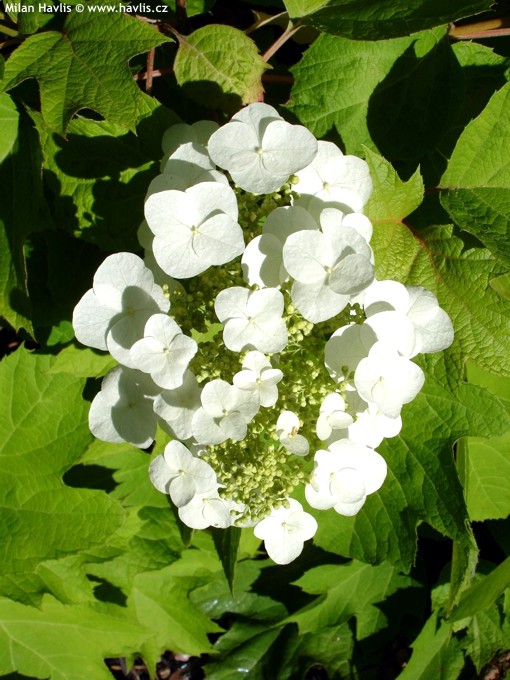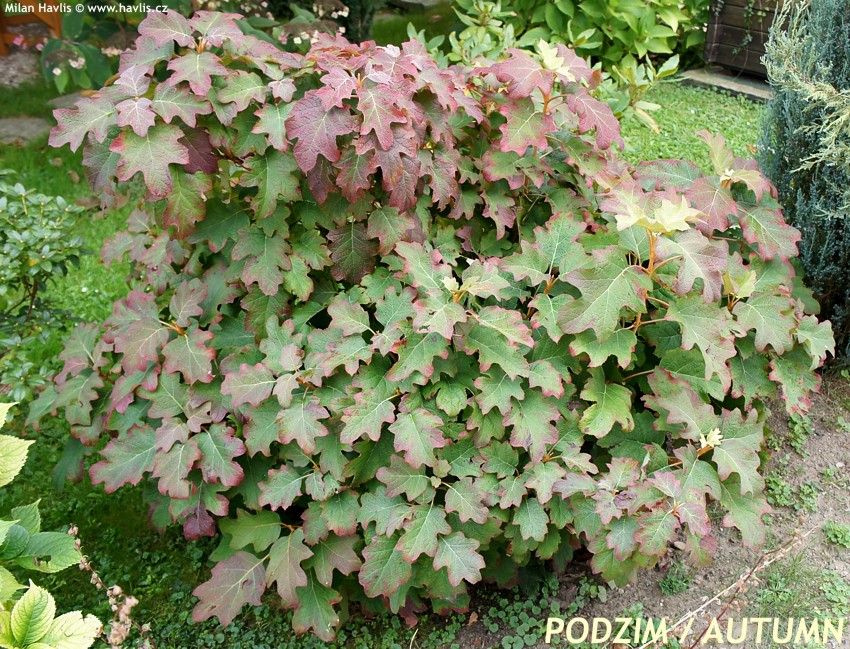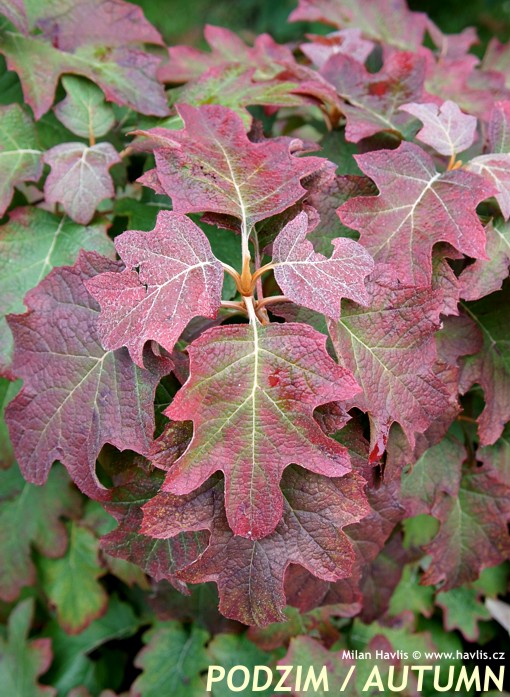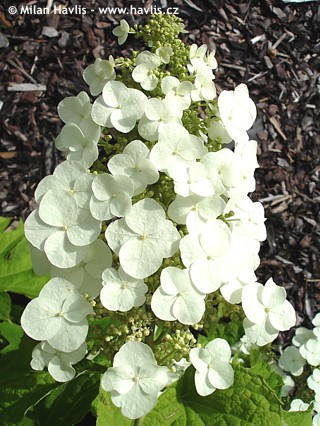Hydrangea quercifolia 'BURGUNDY' oak-leaved (oakleaf) hydrangea
size/type
medium-sized shrub,medium-sized shrub
usual height
1-1,5m
usual width
1-1,5m
leaves
deciduous broadleaf
colour of leaves
flowers
showy
colour of flowers
blooming time
June-August
location
full to partial sun
soil type
any (acidic to alkaline)
soil moisture requirements
evenly moist (dislikes drought)
USDA zone (lowest)
5b (down to -27°C)
winter protection
for zone 5+6

for zone 7

categorized
Hydrangea
Oakleaf hydrangea is a sought-after flowering plant because it offers many beautiful features at once: unusually shaped leaves, abundant flowering, and attractive autumn leaf colouration. It is native to the southeastern part of the USA and was first described by the American botanist William Bartram (1739-1823) during his botanical exploration, which he conducted between 1773 and 1777 in the area of present-day Georgia. Despite being a very warm location, this hydrangea has demonstrated the ability to survive frosts far further north, down to -30 °C, and some varieties can cope with even harder frost. Its undying popularity is reflected in the new varieties that are still being bred today.Description of the plant:
Burgundy is an attractive oak-leaved hydrangea which distinguishes itself from the species and most other varieties by the deep burgundy red colour of autumn foliage. Moreover, the leaves have more body and rounded lobes and are a bit longer and tougher. They are bright green as they emerge and turn only a tone deeper to grass green in summer. New twigs are golden yellow, slightly hairy.In late June medium-sized panicles composed of creamy white flowers appear and continue blooming for 6-8 weeks. After that, they do not usually fade out but take on pink shades which develop into slightly deeper purple red shades towards the autumn. Burgundy hydrangea grows more slowly than the species, making a dense shrub with good branching. It keeps a compact shape without pruning. Still, if you need to prune or shape the plant do so immediately after flowering because it flowers on last year’s wood. To achieve a smaller plant, root pruning is preferred – simply cut into the side roots with a spade at a distance of about 25-30 cm from the centre of the shrub and it will not grow as much the following year.
Native habitat of oakleaf hydrangea ranges from moist meadows to partly waterlogged streambanks where the soil has enough nutrients. Provide similar conditions for it in your garden as well. It tolerates heavy soils well; it just may take a while to establish there. It will be happiest in partial shade, but in permanently moist soil, it will thrive even in full sun. Appropriate fertilization will enhance its beauty, but excessive feeding will result in rapid growth and weak branches. Under good conditions, the plant may produce suckers, but it is very easy to keep in place by their removal which can yield new seedlings for planting elsewhere or serve as a gift to your green-fingered friend. Fully hardy to at least -29 °C (USDA zone 5).
Last update: 22-02-2012; 27-01-2025
QUICK PRICE OVERVIEW
CURRENTLY SOLD OUT












